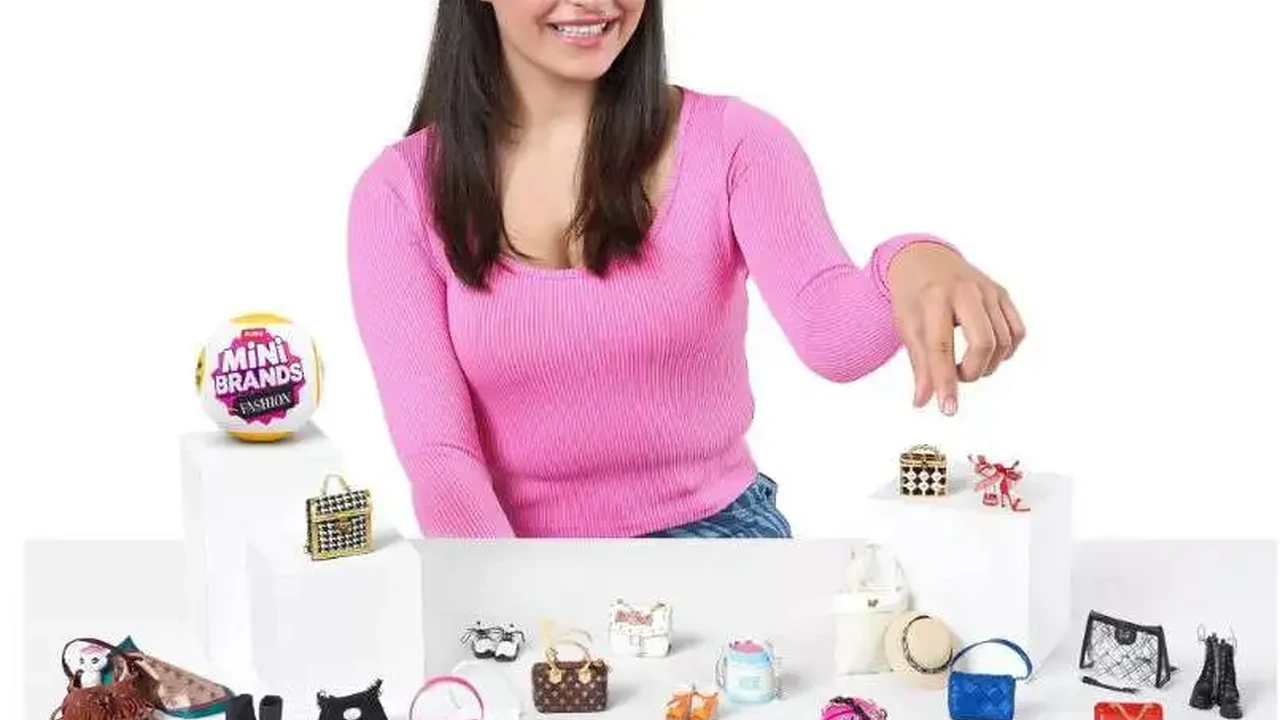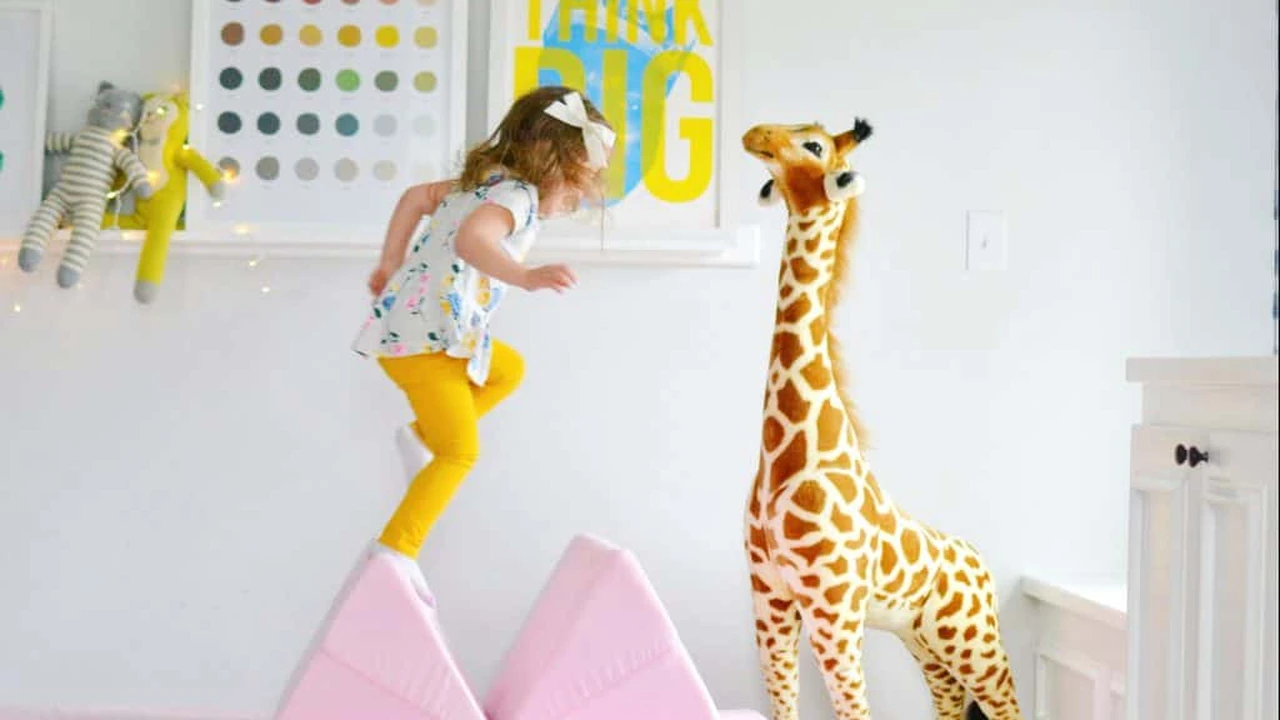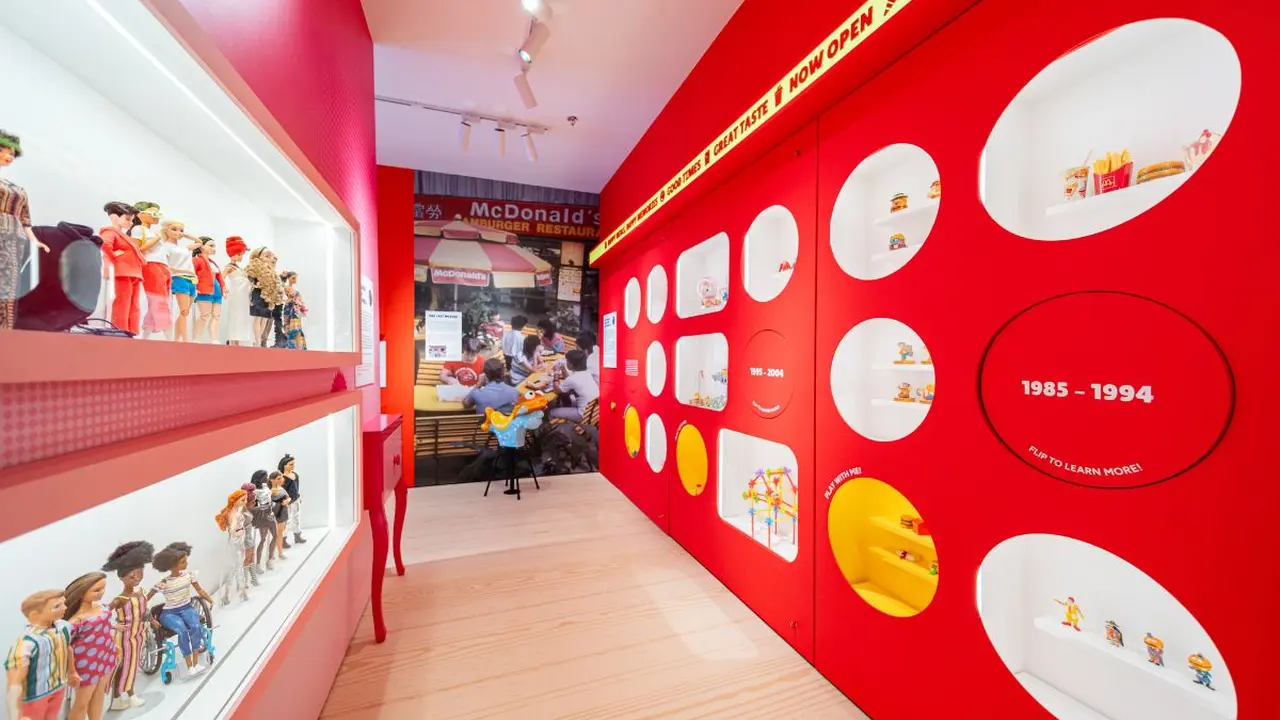How to Spot Fake Fashion Toys A Buyer's Guide
Learn to identify counterfeit fashion toys and ensure you're buying authentic products.

Learn to identify counterfeit fashion toys and ensure you're buying authentic products.
How to Spot Fake Fashion Toys A Buyer's Guide
Hey there, fellow fashion toy enthusiasts! There's nothing quite like the thrill of adding a new, authentic piece to your collection, right? But let's be real, in today's market, especially with the rise of online shopping, it's becoming increasingly tricky to tell the real deal from a clever fake. Counterfeit fashion toys aren't just a bummer for collectors; they can also be poorly made, potentially unsafe, and they definitely devalue the legitimate market. So, how do you protect yourself and your wallet? This guide is all about arming you with the knowledge to spot those fakes from a mile away. We'll dive deep into what to look for, from packaging nuances to product specifics, and even touch on where to buy safely. Let's get started!
Understanding the Counterfeit Fashion Toy Market: Why Fakes Exist
Before we get into the nitty-gritty of spotting fakes, it's helpful to understand why they're so prevalent. Simply put, there's a huge demand for popular fashion toys, and counterfeiters are always looking to cash in on that demand without putting in the effort of legitimate design, manufacturing, and marketing. They often target popular brands like Barbie, Rainbow High, L.O.L. Surprise! OMG, Bratz, and even more niche collector lines. The profit margins on fakes can be massive because they cut corners on materials, labor, and intellectual property. This means they can sell them for significantly less, which unfortunately lures in unsuspecting buyers looking for a bargain. The global nature of e-commerce also makes it easier for these products to reach consumers worldwide, often bypassing quality control and legal checks.
The First Line of Defense: Scrutinizing the Packaging and Branding
The packaging is often your very first clue. Legitimate brands invest heavily in their packaging because it's part of their brand identity and marketing. Counterfeiters, not so much. Here's what to look for:
Packaging Quality and Materials: A Tell-Tale Sign of Authenticity
Cardboard and Plastic: Authentic fashion toys usually come in sturdy, high-quality cardboard boxes or blister packs. The cardboard should feel thick and durable, not flimsy or easily bent. The plastic windows should be clear, not cloudy or scratched. Fakes often use thinner, cheaper materials that feel noticeably inferior. You might notice uneven cuts, rough edges, or even a strange chemical smell from the plastic.
Printing and Graphics: This is a big one. Genuine packaging will have crisp, clear, high-resolution images and text. Colors will be vibrant and consistent. Counterfeit packaging often features blurry images, pixelated logos, faded colors, or even misaligned graphics. Look closely at the brand logo – is it exactly right? Are there any subtle differences in font, size, or spacing? Sometimes, they'll use a slightly altered logo to avoid direct copyright infringement, like 'Barbiee' instead of 'Barbie'.
Spelling and Grammar: This is a dead giveaway. Counterfeiters, especially those operating internationally, often make mistakes in spelling, grammar, or punctuation on the packaging. Read every word carefully. A legitimate company would never release a product with typos on its official packaging.
Brand Logos and Trademarks: The Devil is in the Details
Official Logos: Always compare the logo on the packaging to the official logo on the brand's website. Look for exact matches in font, color, and design. Counterfeiters might use a slightly different shade of color, a subtly altered font, or even omit small design elements.
Trademark Symbols (™ and ®): Legitimate products will almost always have the correct trademark (™) or registered trademark (®) symbols next to the brand name or logo. Fakes often omit these, or use them incorrectly.
Licensing Information: Many fashion toys are licensed products. Check for licensing information, usually found in small print on the back or bottom of the box. This might include the manufacturer's name, address, and copyright dates. Counterfeits often lack this information or provide vague, incorrect, or incomplete details.
Examining the Product Itself: Beyond the Box
Once you've moved past the packaging, the toy itself holds even more clues. This is where quality control (or lack thereof) really shines through.
Doll Quality and Construction: From Head to Toe
Materials and Feel: Authentic fashion dolls are made from high-quality plastics and vinyls that feel smooth, durable, and often have a pleasant weight to them. Fakes often use cheaper, lighter plastics that can feel brittle, greasy, or have a strong chemical odor. The skin tone might be off, or inconsistent across different body parts.
Face Paint and Details: This is one of the hardest things for counterfeiters to replicate perfectly. Genuine dolls will have precise, clean face paint with sharp lines and no smudges or bleeding. Eyes will be symmetrical and well-aligned. Lips will be neatly painted. Fakes often have sloppy face paint, misaligned eyes, smudged lipstick, or even missing details like eyelashes or eyebrows. The overall expression might look 'off' or less detailed than the official product photos.
Hair Quality: Authentic doll hair is usually rooted evenly, feels soft, and is made from high-quality fibers that can be styled. Fakes often have sparse, unevenly rooted hair that feels coarse, greasy, or like cheap plastic. It might shed easily or be poorly cut.
Articulation and Joints: Many modern fashion dolls have articulated joints for posing. Genuine dolls will have smooth, sturdy joints that hold poses well. Fakes often have loose, flimsy joints that don't hold poses, or stiff joints that are difficult to move. You might hear creaking noises or feel resistance when trying to pose them.
Fashion and Accessories: The Devil in the Details
Fabric Quality and Stitching: The clothing on authentic fashion dolls is usually made from decent quality fabrics with neat, even stitching. Look for finished seams, proper hems, and well-attached closures (snaps, Velcro, etc.). Counterfeit clothing often uses cheap, thin fabrics that fray easily. Stitching might be loose, uneven, or unfinished. Buttons or embellishments might be poorly attached or missing.
Accessory Details: Accessories like shoes, handbags, jewelry, and props should be well-made and detailed. Authentic accessories will have crisp molding, clean paint applications, and feel solid. Fakes often have rough edges, poor paint jobs, flimsy construction, or are made from cheap, brittle plastic. Sometimes, accessories might be missing entirely or replaced with generic, unbranded items.
Where to Buy: Minimizing Your Risk of Counterfeits
Where you purchase your fashion toys plays a massive role in whether you end up with an authentic product or a fake. Be smart about your shopping choices!
Authorized Retailers: The Safest Bet for Authentic Fashion Toys
Major Retail Chains: Stores like Target, Walmart, Toys R Us (where available), Smyths Toys, and other large, reputable toy retailers are almost always safe bets. They source directly from the manufacturers or authorized distributors, ensuring authenticity.
Official Brand Websites: Buying directly from the brand's official website (e.g., Mattel.com, MGAE.com) is the safest way to guarantee authenticity. You're getting the product straight from the source.
Reputable Online Toy Stores: There are many well-established online toy stores that specialize in collectibles. Do your research, read reviews, and ensure they have a good reputation for selling genuine products.
Navigating Online Marketplaces: Proceed with Caution
Amazon, eBay, Etsy, Shopee, Lazada: These platforms are a mixed bag. While many legitimate sellers operate here, they are also hotbeds for counterfeiters. Here's how to protect yourself:
- Seller Reviews and Ratings: Always check the seller's feedback score and read recent reviews. Look for consistent positive feedback, especially regarding authenticity. Be wary of new sellers with no history or those with a high percentage of negative reviews mentioning fakes.
- Product Descriptions and Photos: Be suspicious of listings with generic stock photos, poor-quality images, or descriptions that are vague, poorly written, or contain spelling errors. Authentic sellers will usually provide multiple clear, high-resolution photos of the actual product.
- Price: If the price seems too good to be true, it probably is. A brand new, popular fashion doll selling for a fraction of its retail price is a huge red flag. Counterfeiters often use low prices to attract buyers.
- Location of Seller: While not always a definitive sign, be cautious of sellers located in regions known for high rates of counterfeit production.
- Return Policies: Ensure the seller has a clear and fair return policy in case you receive a fake.
Second-Hand Market and Collector Groups: Buyer Beware
Flea Markets, Garage Sales, Unofficial Collector Groups: These can be great places to find rare or vintage items, but they also carry the highest risk of encountering fakes. You're often buying from individuals, and there's less recourse if something goes wrong. Always inspect items thoroughly in person if possible. If buying online, ask for detailed photos from multiple angles and don't hesitate to ask questions about the item's provenance.
Specific Product Examples and What to Look For: Real vs. Fake
Let's get practical with some popular fashion toy lines and common counterfeit tells:
Barbie Dolls: Iconic and Often Copied
Authentic Barbie: Look for the Mattel logo clearly printed on the packaging and often molded onto the doll's body (usually on the lower back or head). The face paint is precise, eyes are symmetrical, and hair is rooted well. Joints are smooth. Packaging is sturdy with clear images. Prices for new, standard Barbies typically range from $10-$30 USD, while collector editions can go much higher.
Fake Barbie: Often called 'Fashion Doll' or 'Beautiful Girl Doll'. Packaging might have a similar font but not the exact Barbie logo. Face paint is usually messy, eyes might be cross-eyed or uneven. Hair is sparse and coarse. Plastic feels cheap and light. Joints are often stiff or very loose. Prices are usually suspiciously low, like $5 or less.
Example Product: A genuine 'Barbie Fashionista' doll will have a clear Mattel logo, well-rooted hair, and detailed clothing. A fake might have 'Fashion Doll' on the box, blurry face paint, and thin, poorly stitched clothes.
Rainbow High Dolls: Vibrant and Vulnerable to Fakes
Authentic Rainbow High: These dolls are known for their vibrant, multi-layered outfits, detailed accessories, and high-quality rooted hair. The MGA Entertainment logo is prominent. Face paint is intricate and clean. Articulation is excellent. Prices typically range from $25-$50 USD depending on the series and accessories.
Fake Rainbow High: Often sold as 'Color Girl Dolls' or similar. Packaging might mimic the rainbow theme but lack the official logo. Hair is often thin, frizzy, and sheds easily. Face paint is simplified, smudged, or has incorrect colors. Outfits are made from cheap, shiny fabric with poor stitching and missing details. Accessories are often generic or absent. Joints are usually stiff or very loose. Prices are often $10-$15 USD.
Example Product: A genuine 'Rainbow High Series 4' doll will have two complete outfits, detailed shoes, and a stand. A fake might only have one poorly made outfit, no stand, and simplified accessories.
L.O.L. Surprise! OMG Dolls: Layers of Authenticity Checks
Authentic L.O.L. Surprise! OMG: These dolls come with elaborate unboxing experiences, multiple outfits, and detailed accessories. The MGA Entertainment logo is key. The dolls themselves have unique sculpts, detailed face paint, and high-quality rooted hair. Prices are usually $25-$40 USD.
Fake L.O.L. Surprise! OMG: Often sold in generic packaging or clear plastic bags. The 'surprise' element is usually missing or very basic. The doll itself will have poor quality plastic, messy face paint, and cheap, sparse hair. Outfits are simplified and poorly made. Accessories are often missing or generic. The plastic might have a strong chemical smell. Prices are typically $5-$15 USD.
Example Product: A genuine 'L.O.L. Surprise! OMG Series 3' doll will have a full unboxing experience with multiple blind bags. A fake will likely be in a simple box with all items visible, and the doll will be of much lower quality.
Bratz Dolls: Attitude and Authenticity
Authentic Bratz: Known for their distinctive large heads, slender bodies, and fashion-forward outfits. MGA Entertainment logo is present. Face paint is bold and clean. Hair is usually high quality. Prices for new dolls are around $20-$35 USD, while vintage ones can be much more.
Fake Bratz: Often have disproportionate features, dull or smudged face paint, and very cheap, sparse hair. The plastic quality is noticeably inferior. Outfits are poorly replicated. Prices are very low, often under $10.
Example Product: A genuine 'Bratz Original Fashion Doll' will have the iconic Bratz logo, detailed clothing, and well-rooted hair. A fake might have a generic 'Fashion Doll' name, simplified clothing, and poor hair quality.
What to Do If You Suspect a Fake: Your Next Steps
So, you've received a fashion toy and you're pretty sure it's a fake. Don't panic! Here's what you can do:
Contact the Seller: Attempting a Resolution
Direct Communication: First, contact the seller directly. Explain your concerns clearly and politely, stating why you believe the item is counterfeit. Provide photos as evidence. Request a full refund and instructions for returning the item (if they want it back).
Be Prepared for Resistance: Some sellers might deny it, ignore you, or offer a partial refund. Be firm but polite. If they refuse a full refund or are uncooperative, move to the next step.
Utilize Platform Protection: Filing a Claim
Online Marketplace Dispute Resolution: Most major online marketplaces (Amazon, eBay, PayPal, Etsy, Shopee, Lazada) have buyer protection programs. File a dispute or claim through their official channels. Provide all your evidence: photos of the fake item, screenshots of the listing, and any communication with the seller. These platforms often side with the buyer in cases of counterfeit goods.
Report the Counterfeiter: Helping Others and the Industry
Report to the Platform: Even if you get your money back, report the seller to the platform for selling counterfeit goods. This helps them track and remove bad actors.
Report to the Brand: Consider reporting the counterfeit to the actual brand (e.g., Mattel, MGA Entertainment). Most major toy companies have dedicated intellectual property departments that investigate counterfeiting. Providing them with details can help them take legal action against the counterfeiters.
Consumer Protection Agencies: In some cases, you might consider reporting to your local consumer protection agency or fraud department, especially if the item poses a safety risk.
Final Thoughts on Authentic Fashion Toy Shopping
Buying fashion toys should be a fun and rewarding experience, not a stressful one filled with worry about fakes. By being vigilant, knowing what to look for, and choosing your purchasing channels wisely, you can significantly reduce your risk of falling victim to counterfeiters. Always remember: if a deal seems too good to be true, it probably is. Invest a little time in research and inspection, and you'll be well on your way to building a truly authentic and cherished fashion toy collection. Happy collecting!
:max_bytes(150000):strip_icc()/277019-baked-pork-chops-with-cream-of-mushroom-soup-DDMFS-beauty-4x3-BG-7505-5762b731cf30447d9cbbbbbf387beafa.jpg)






